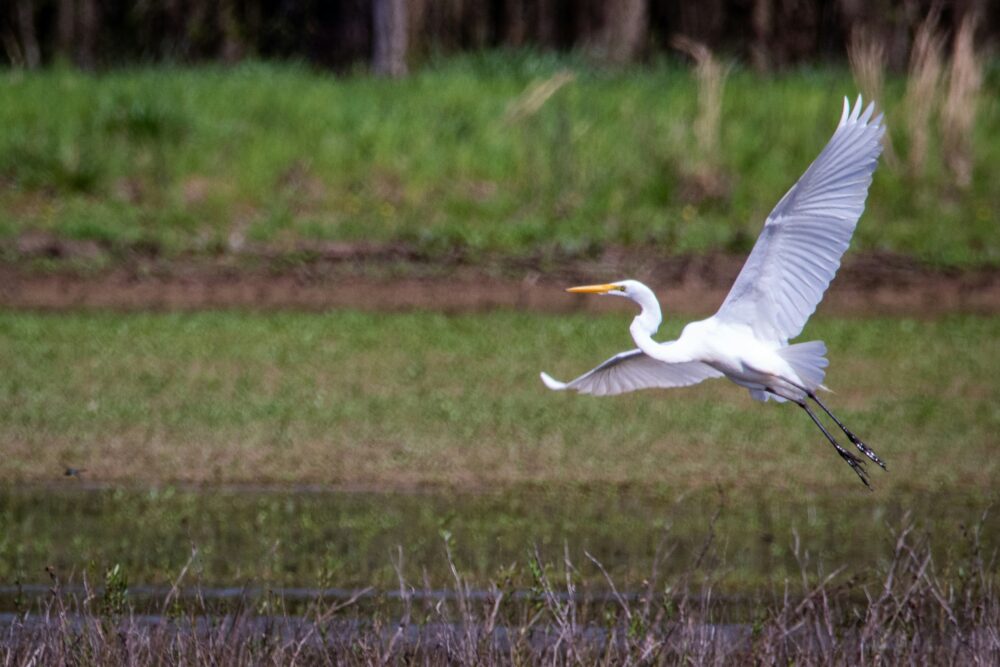We have much more to do and your continued support is needed now more than ever.
A Way Forward to Protect Osprey’s Coastal Habitat
The awe-inspiring osprey—who hunt by diving into the water from heights up to 100 feet—are found near ponds, rivers, lakes and along our coastal waterways.

Most ospreys breed in the north and migrate south for the winter, and rely upon coastal habitat areas along the way. But coastal development combined with the impacts of superstorms and extreme weather events such as Hurricane Sandy could spell trouble for coastal communities and wildlife.

Protecting Wetland Wildlife Habitat
On Saturday, wetland habitat for wildlife like osprey came into focus as the Wall Street Journal gave National Wildlife Federation President & CEO Collin O’Mara and Allied World Assurance President & CEO Scott Carmilani a chance to tell its 2.4 million subscribers how natural defenses can protect the homes of both people and wildlife:
Just as Sandy showed the growing risk from extreme storms in our changing climate, healthy urban marshes in New York, New Jersey and Delaware demonstrated how natural defenses can provide unrivaled protection from the damage they can inflict. For example, a broad coalition of federal, state and local agencies in New York have spent eight years restoring more than 150 acres of wetlands in Jamaica Bay using hundreds of thousands of cubic feet of dredged material and more than a million native marsh plants. These restored marshes held strong during Sandy and helped absorb the storm’s destructive wave action. According to a 2008 study published in the journal of the Royal Swedish Academy of Sciences, coastal wetlands provide as much as $23.2 billion worth of storm protection annually in the U.S. […]
Not much is expected from Washington these days, yet reforming disaster preparedness may have bipartisan appeal. For conservatives, our proposed solutions reduce federal expenses and support private markets. For liberals, the solutions protect local communities and restore natural resources. What are we waiting for?
The column focused on our recent joint report, Natural Defenses from Hurricanes and Floods: Protecting America’s Communities and Ecosystems in an Era of Extreme Weather.
Here are a few recommendations for elected officials and policy-makers to provide a way forward for protecting the coastal habitat that osprey and other wildlife depend on.
Curb Risky Development
Fix federal and state laws that encourage risky development by privatizing economic benefits while socializing losses. Subsidies within the National Flood Insurance Program should be phased out with sensitivity to low-income households. In addition, a greater portion of federal disaster-relief funds allocated to state and local governments under the Stafford Act should be dedicated to mitigate hazards. Communities should be required to take proactive mitigation measures to be eligible for assistance in the aftermath of natural disasters.
Congress also should strengthen the Coastal Barrier Resources Act, which prevents federal subsidies for risky development on some sensitive coastal lands. It should make restoration projects a priority in the Army Corps of Engineers’ budget; and it should finalize Clean Water Act protections of wetlands and streams that absorb millions of gallons of floodwater.
Step Up Our “Natural Infrastructure”
Major investments in “natural infrastructure” should become the preferred means of defending communities against the dangers of extreme weather. Protecting and restoring wetlands, dunes, living shorelines, upland forests and other open space provides a host of benefits: flood protection, clean water, habitat for fish and wildlife, and increased opportunities for recreation and tourism.





















